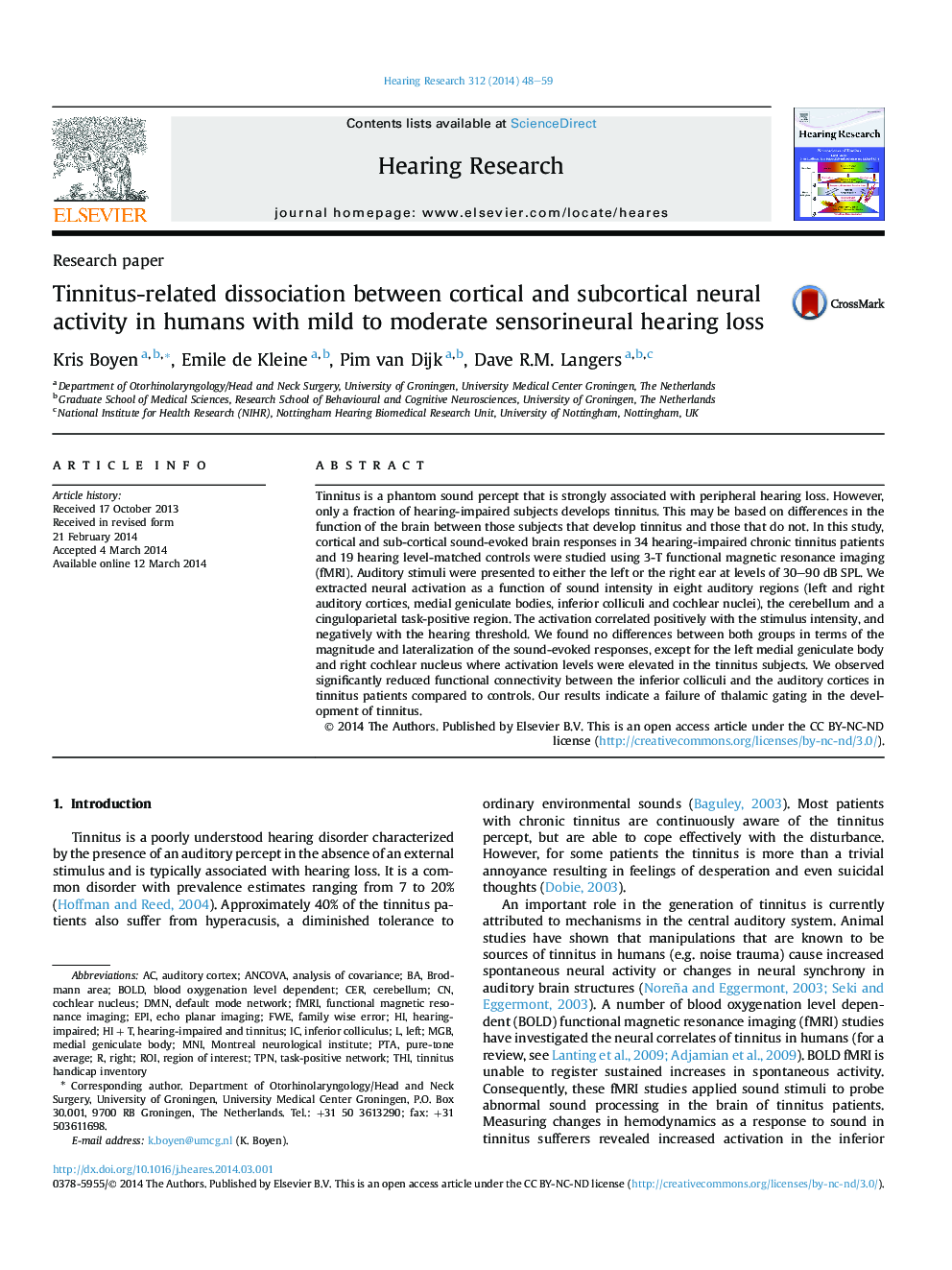| Article ID | Journal | Published Year | Pages | File Type |
|---|---|---|---|---|
| 6287396 | Hearing Research | 2014 | 12 Pages |
Abstract
Tinnitus is a phantom sound percept that is strongly associated with peripheral hearing loss. However, only a fraction of hearing-impaired subjects develops tinnitus. This may be based on differences in the function of the brain between those subjects that develop tinnitus and those that do not. In this study, cortical and sub-cortical sound-evoked brain responses in 34 hearing-impaired chronic tinnitus patients and 19 hearing level-matched controls were studied using 3-T functional magnetic resonance imaging (fMRI). Auditory stimuli were presented to either the left or the right ear at levels of 30-90Â dB SPL. We extracted neural activation as a function of sound intensity in eight auditory regions (left and right auditory cortices, medial geniculate bodies, inferior colliculi and cochlear nuclei), the cerebellum and a cinguloparietal task-positive region. The activation correlated positively with the stimulus intensity, and negatively with the hearing threshold. We found no differences between both groups in terms of the magnitude and lateralization of the sound-evoked responses, except for the left medial geniculate body and right cochlear nucleus where activation levels were elevated in the tinnitus subjects. We observed significantly reduced functional connectivity between the inferior colliculi and the auditory cortices in tinnitus patients compared to controls. Our results indicate a failure of thalamic gating in the development of tinnitus.
Keywords
ROIFWETHIPTAMGBTPNMNIEPIDMNBOLDANCOVAPure-tone averagemedial geniculate bodyanalysis of covarianceLeftecho planar imagingfunctional magnetic resonance imagingfMRIfamily wise errorright Cerblood oxygenation level dependentdefault mode networkTask-positive networkTinnitus Handicap InventoryAuditory CortexCerebellumBrodmann arearegion of interestMontreal Neurological Institutehearing-impairedCochlear NucleusInferior colliculus
Related Topics
Life Sciences
Neuroscience
Sensory Systems
Authors
Kris Boyen, Emile de Kleine, Pim van Dijk, Dave R.M. Langers,
